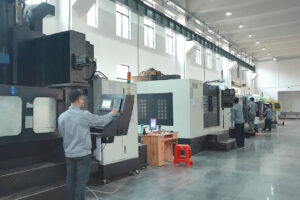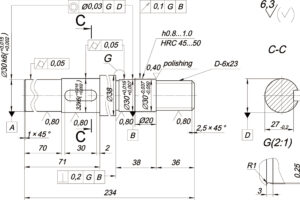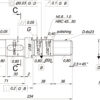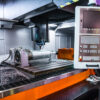Introduction of commonly used sheet metal materials
- Cold rolled sheet
Referred to as SPCC, as the most basic sheet metal material, it is widely used.
Advantages: low cost, easy to form.
Disadvantage: easy to rust.
- Galvanized sheet
As SECC/SGCC, the SECC electrolytic plate is divided into N material and P material. N material usually does not do surface treatment, and the cost is high. P material is used for sprayed parts.
Advantages: anti-corrosion, easy to form.
Disadvantage: high cost.
- Hot rolled sheet
Referred to as SPHC, it is a low-end rust-prone material; the thickness is generally more than 3mm, the cost is low, but it isn’t easy to form, and it is usually used as a hinge product.
Advantages: low cost.
Disadvantages: difficult to form, easy to rust.
- Copper
They are mainly used as wire, cable, and other conductive equipment. The surface can be plated with nickel and chrome, but the surface is usually not treated because of the high cost.
Advantages: good electrical conductivity, good thermal conductivity, good corrosion resistance (in dry air), good strength, etc.
Disadvantages: high density, heavyweight, a layer of patina will be formed in a humid environment.
- Stainless steel
SUS304 is commonly used. Because of its good anti-rust and anti-corrosion properties, the surface is usually not treated.
- Aluminum plate or aluminum alloy
The density is low, and the oxide film is formed on the surface in the natural state, which is anti-corrosion and is widely used in aviation, aerospace, automobiles, ships, etc.
Advantages: low density. Light weight, good electrical and thermal conductivity, good corrosion resistance, low-temperature resistance, etc.
Disadvantages: pure aluminum is soft and slightly weak and cannot be used for main bearing parts.
What is the purpose of surface treatment of sheet metal materials?
- To improve the service life in harsh environments: anti-rust and anti-corrosion capabilities.
- Meet the appearance requirements and achieve the desired decorative effect.
Introduction of commonly used surface treatment technology for sheet metal materials
- Electroplating
In the electroplating solution, charged ions are attached to the surface of the product under the action of an electric field to form a coating.
- Dusting
Spraying is a coating process in which powder-based coatings are adhered to a work surface by corona discharge. After the powder is sprayed, it is hot melted or cured to form a coating on the work surface.
- Electrophoresis
Electrophoresis methods are divided into anodic electrophoresis and cathodic electrophoresis. When the coated particles are negatively charged, the workpiece is the anode, and the coated particles make the film adhere to the workpiece under the action of the electric field. Conversely, suppose the coated particles are charged. In that case, the object to be processed is a cathode, and the coated particles attach a thin film to the object to be processed, called cathodic electrophoresis.
- Dip plastic
Dip molding is also known as coating, thermal immersion, and thermal coating. Dip molding is a plastic coating process. Raw materials for dip molding can be divided into liquid-impregnated plastics and powder-impregnated (applied) plastics. Impregnation technology has been widely used in various raw materials and life fields at home and abroad, such as: drying daily clothes on hangers, clipping rubber sleeves, scissors, folds, etc.
- Oxidation
Oxidize the metal on the workpiece and form a deep protective film on the surface of the workpiece to increase the corrosion resistance of the workpiece. Generally speaking, there are chemical oxidation and anodic oxidation. It is a general surface treatment.
6, wire drawing
Surface wire drawing is a surface treatment method reproduces the decorative effect by grinding the product to form lines on the working surface. Since surface line drawing processing can reflect the texture of metal materials, more and more users love and widely use it.
- Embossing
Imprint processing refers to arranging a thin plate between the upper and lower molds, changing the thickness of the material under the action of pressure, filling the pressed material in the convex and concave parts of the mold cavity, filling with concave and convex fine lines, and forming a pattern on the surface of the workpiece. For example, coins and commemorative medals in use today are formed by presses.
- Baking paint
By spraying, high-temperature sintering, and other methods, the material’s surface is coated with various coatings colors to beautify the appearance and improve corrosion resistance. Generally, there are liquid baking coatings and powder baking coatings. The surface of the baked coating is not conductive and cannot be used in areas with EMC requirements.







